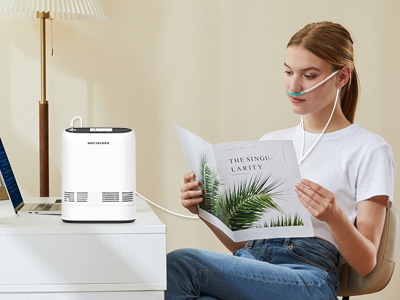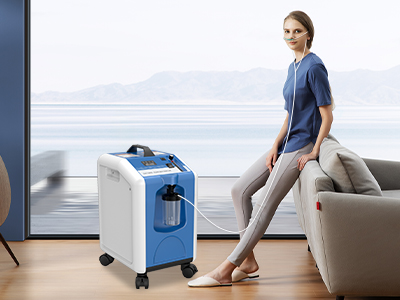12 Apr 2024
Oxygen concentrators are valuable medical devices that provide a continuous flow of oxygen to individuals with respiratory conditions. However, like any medical treatment, they can come with side effects that users should be aware of to ensure safe and effective therapy.

Dryness and Irritation
Oxygen concentrators work by extracting oxygen from the surrounding air and delivering it through a nasal cannula or mask. This continuous airflow can lead to dryness and irritation of the mucous membranes in the nose and throat, causing discomfort for some users. To alleviate dryness, users can try using a humidifier attachment with their oxygen concentrator or applying saline nasal spray to moisturize the nasal passages.
Nosebleeds and Nasal Discomfort
Increased airflow through the nasal passages can sometimes lead to nosebleeds and nasal discomfort, especially in individuals with sensitive mucosal tissues. This is due to the drying effect of the concentrated oxygen on the delicate nasal membranes. To prevent nosebleeds, users can ensure that their nasal cannula fits properly and is not too tight, and they can also use a humidifier to add moisture to the oxygen stream.
Ear and Sinus Pressure
The continuous flow of oxygen from the concentrator can create pressure in the ears and sinuses, similar to the sensation experienced during changes in altitude. This pressure buildup can be uncomfortable and may cause ear popping or sinus pain. To alleviate ear and sinus pressure, users can try swallowing, yawning, or performing the Valsalva maneuver to equalize pressure in the ears.

Skin Irritation and Rash
Extended use of oxygen tubing can sometimes lead to skin irritation and rash, particularly around the ears and cheeks where the tubing rests against the skin. This is often due to friction or moisture buildup between the tubing and the skin. To prevent skin irritation, users can ensure that their tubing is clean and dry, and they can also use soft padding or silicone pads to cushion areas of contact.
Eye Irritation and Dryness
Increased airflow around the eyes from wearing a nasal cannula or mask can sometimes cause eye irritation and dryness. This is due to the airflow disrupting the natural moisture balance of the eyes and can lead to symptoms such as redness, itching, and dryness. To alleviate eye irritation, users can try using artificial tears or lubricating eye drops to keep the eyes moist.
Headache and Dizziness
In rare cases, oxygen therapy from a concentrator can lead to oxygen toxicity and hyperoxia, which can cause symptoms such as headache, dizziness, confusion, and nausea. This occurs when the body receives too much oxygen for an extended period, leading to oxidative stress and tissue damage. To prevent oxygen toxicity, users should monitor their oxygen levels regularly and consult with their healthcare provider if they experience any symptoms of oxygen overdose.
Fatigue and Weakness
Some users may experience fatigue and weakness when first starting oxygen therapy with a concentrator. This is because the body is adjusting to the increased oxygen levels and may require some time to adapt. To minimize fatigue and weakness, users should start with a lower oxygen flow rate and gradually increase it as needed, under the guidance of their healthcare provider.
Conclusion
In conclusion, while oxygen concentrators are effective for providing supplemental oxygen to individuals with respiratory conditions, they can sometimes cause side effects that users should be aware of. By understanding these side effects and implementing strategies to mitigate them, users can ensure a safe and comfortable oxygen therapy experience. It's essential for users to monitor their symptoms closely and seek medical advice if they experience any adverse reactions to oxygen therapy.
Keywords: oxygen concentrator
Originally published 12 Apr 2024, updated 12 Apr 2024.